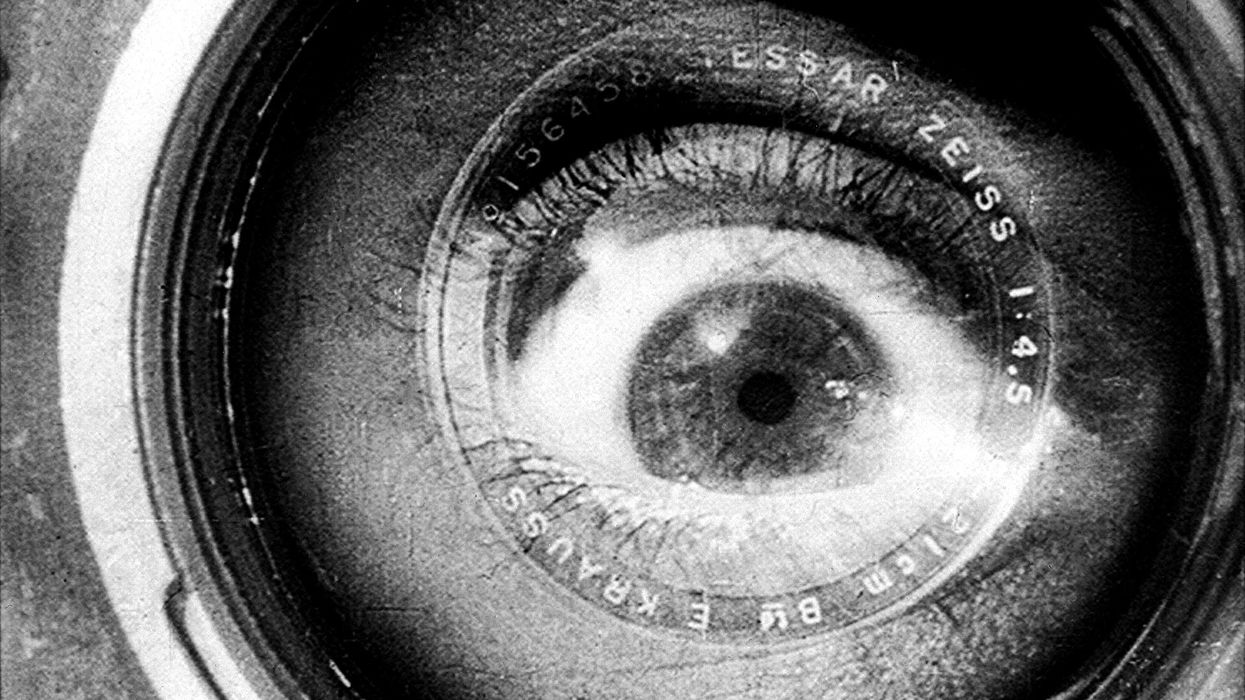Watch: How Soviet Cinema Gave the Movie Camera its Eyes
Film school in video essay form.

[Editor's Note: The following introduction was written by Max Winter.]
When Brian De Palma’s The Untouchables came out in the mid-1980s, the scene film buffs focused on took place in Union Station, Chicago, in which a brutal shootout between Al Capone’s mob and the FBI takes place as a baby carriage slowly bumpity-bumps down the staircase, only to be caught in the end. It’s a great piece of filmmaking—probably one of De Palma’s best—but it is also directly lifted from one of the most famous scenes in film history: the baby carriage scene from Sergei Eisenstein’s Battleship Potemkin.
This film was one of the cornerstones of the film movement known as Soviet formalism, covered with great agility in this video essay by Tyler Knudsen.
Knudsen’s piece shows us the whole arc of the movement, its beginnings preceded by the rapid-fire growth of the movie industry in Russian in the early 20th century, which would lead to the development of Mosfilm, one of the largest movie studios in Russian film history.
Running alongside this development, a more rebellious branch of filmmaking was developing. The Association of Revolutionary Cinema, led by Eisenstein and a filmmaker named Lev Kuleshov, wanted to create films that were as unlike the dull, traditional movies made before the Russian Revolution as possible. Their primary weapons against filmmaking of the past were an intensified sense of realism and skill with montage, or the melding together of images to create a new meaning.
There were several ideas about montage: some felt it should show the relationships and visual correspondences between images smoothly, while others, like Eisenstein, felt the opposite was true. Kuleshov was interested in subtle connections between images rather than literal or thematic correspondences. In a famous film dubbed the Kuleshov Effect, he interspersed identical shots of an actor’s face with disparate images; though all the images of the face were the same, it seemed to change expression after each cut, due to audience interpretation. Eisenstein’s idea about montage, which certainly dominates the common conceptions of that word, was that new meanings were created when images clash as they come up against each other.
Knudsen’s piece also teaches us a lot about two other remarkable Soviet formalists, Dziga Vertov and Alexander Dovzhenko. Vertov’s most widely known film is a documentary named Man with a Movie Camera, an impressively self-aware film for its time. Growing out of Vertov’s idea that the camera is a “cine-eye” on the world, the film purports to simply be a report in life in the city, but it also shows the filmmaker making the film as well as viewers watching the film itself, part of a rollicking tour that incorporates a wide range of formats and techniques. Vertov referred to the piece as a “city symphony,” alluding to his intention that all the parts harmonize nicely. Dovzhenko would become famous for his Ukrainian Trilogy, an allegory of sorts growing out of Ukrainian folklore, despised by the Soviet Union for its anti-Soviet message but beloved in many other places in the world.
Knudsen completes the arc by showing us how, after a few years, the Soviet Formalists went back to their roots, making conventional films for large studios. Regardless of the paths they took, however, Soviet formalism deepened the methodology of all films that followed it, making succeeding filmmakers’ jobs both more fulfilling and more difficult.
This video essay, a collaboration by Press Play and No Film School, is the newest in a series on film movements, their histories, and their enduring influence. Familiarity with movements of the past is crucial to the understanding of current cinematic trends.











